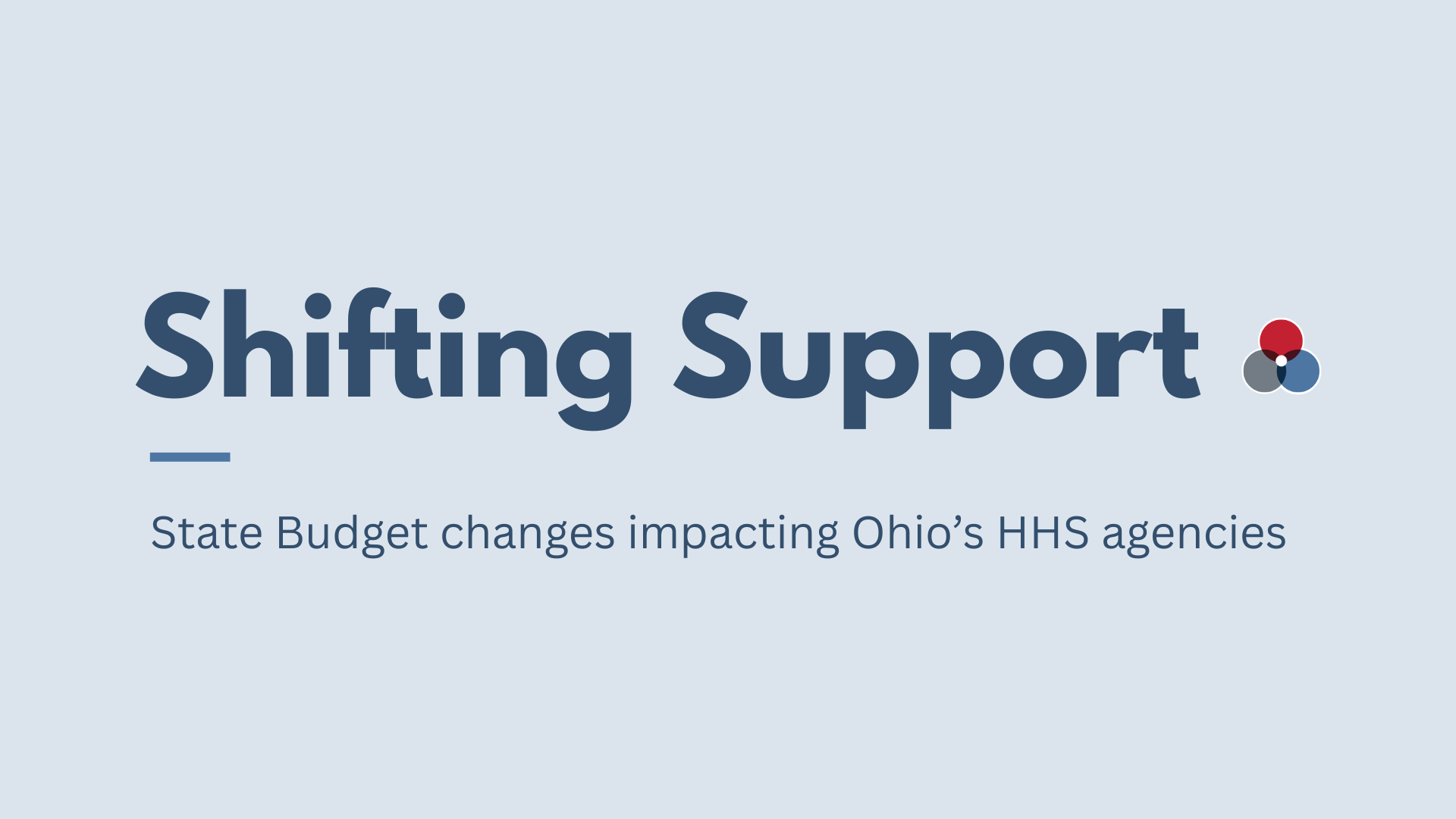INTRODUCTIONPursuant to Ohio Revised Code §5166.37,[1] the Ohio General Assembly has mandated the Ohio Department of Medicaid seek federal approval for an 1115 Demonstration Waiver imposing work requirements on individuals covered through Medicaid via the Group VIII expansion. Pursuant to law established in the Patient Protection and Affordable Care Act, and further articulated in federal rule,[2] the state and federal governments must collect and respond to public comment.On February 16, the state of Ohio released its proposed waiver, holding two public hearings on February 21 and March 1, with the comment period closing March 18.[3] To comply with the state and federal guidance, the state is proposing that all individuals who are eligible for Medicaid under the expansion be included in the waiver. The following document represents the public comment from The Center for Community Solutions in regards to the state’s proposal before submission to the Department of Health and Human Services and the Centers for Medicare and Medicaid Services (CMS).Ohio’s proposal, known as the “Group VIII Work Requirement and Community Engagement 1115 Demonstration Waiver,” represents an unfunded, legally questionable mandate that fails to meet the essential purpose of Medicaid to provide medical assistance. As such, Community Solutions opposes the proposal.IMPACT ON ACCESSCMS, in its guidance and through comments provided by Administrator Seema Verma, has stated that coverage is not the primary focus of demonstration waivers and makes reference to the “hollow victory of coverage.”[4] It is important, however, to consider the impact of coverage on some of the most pressing health needs in Ohio and also to compare those to the newly stated objectives of CMS.According to the most recent data from the United States Census, Ohio’s uninsured rate is 5.6 percent – the lowest it’s ever been. Our research indicates that this is in large part due to the Medicaid expansion,[5] which reduced the uninsured rate by nearly 18 percent for Ohioans ages 19-64 with family income at or below 138 percent of the Federal Poverty Level.[6] This increase in access will be compromised by the waiver. When looking at Ohio’s implementation of work requirements for individuals receiving Supplemental Nutrition Assistance Program or SNAP benefits, where the state had initially estimated 134 thousand would lose eligibility, nearly 400 thousand have disenrolled.[7] Some of this is attributable to the improving economy, but that trend does not fully explain the broad loss of benefits.Ohio’s overdose rate is nearly three times that of the national average.[8] Ohio spends $1 billion on addiction services annually, nearly $280 million coming from expansion,[9] making it a key resource in the fight against the opiate epidemic.[10] While Ohio’s proposal does exempt individuals in treatment, this downstream approach may interrupt the normal continuity of care and perpetuate the public health crisis of addiction. This is due to the proposal’s requirement to first access treatment in advance of coverage, which inverts the current eligibility process. Additionally, CMS has encouraged the use of 1115 waivers to increase access for individuals in need of inpatient substance use disorder services. The focus of this work centers on the Institutions for Mental Diseases (IMD) exclusion, as it is known, which is existing federal law prohibiting Medicaid reimbursement for inpatient behavioral health treatment. [11] As CMS has stated, they see IMD waivers as tools in the fight against opiate addiction as long as there are appropriate connections to community behavioral health.[12] As many of the individuals who would receive services in an IMD and subsequent community settings are eligible through expansion, it would appear that work requirements harm Ohio’s efforts and run counter to stated CMS addiction policy.EXEMPTIONSAccording to the Office of Health Transformation, 58 percent of the individuals enrolled through expansion earned income in the previous year and 44 percent currently meet the work requirement.[13] This is consistent with national data which suggests that only 7 percent of the total Medicaid expansion population would be subject to the requirements, as the remainder is either working, in school, has a major health issue or serves as a caregiver.[14] In the proposal, the state attempts to accommodate these individual circumstances which may prevent them from meeting the requirement by creating a series of exemptions. According to the state, this leaves roughly 5 percent of the population who would be disenrolled as a result of the state’s changes. However, despite these efforts to limit the impact of these policies on enrollees, the process of eligibility is fundamentally changed and made more complex.Currently, eligibility is primarily a byproduct of income. With work requirements, all 700,000 expansion enrollees would have to go through some level of adjudication on the state, local and/or provider levels. This may include, but is not limited to, segregation of populations within the state’s incomplete Ohio Integrated Eligibility System (OIES), self-attestation on the part of the enrollee, certification of “unfitness” by a medical professional and the appraisal, good cause justification, or modification by a county case worker.Complexity will be a natural byproduct of anyone who may be eligible for, or seeking, an exemption. This can include, but is not limited to, individuals living with HIV/AIDS, persons with behavioral health issues, including addiction, caretakers who may not live in the home of the person for whom they are caring and individuals who may have a disability. With the new eligibility system, individuals will need to garner some level of certification from a provider to validate their “unfitness” with the county. It remains to be seen how the state will ensure that information gathered by the individual and certified by a clinician will be protected and secured, let alone achieved, without coverage in place. In looking at state-based data, in fact, expansion served as a front door for nearly 40 thousand individuals who were initially determined to be able-bodied, only later having the medical needs requalify them for the aged, blind and disabled (ABD) category.[15] And while the state in its response to public comments indicated that much of these issues would be resolved in the state’s rulemaking process, the fact that these are not outlined in the waiver application should mean the application is incomplete and would thus be subject to outright denial.Beyond Cuyahoga, counties will face administrative challenges, especially in a time of dwindling state support.[16] Although the state will exempt 26 counties with high unemployment, as is the case with the SNAP program’s Able Bodies Adults Without Dependents (ABAWDs) work requirement, many other communities, notably cities, will face the same issues of lack of access to sustainable employment for their clients. On average, the population in those exempted counties is 95 percent white. Meanwhile, numerous Ohio cities have unemployment rates equally as high, or higher, as the 26 exempted counties, but residents outside of the selected counties are not entitled to the same work requirement and/or community engagement exemptions. Most of these non-exempted Ohio communities have either majority or significant African-American populations, meaning the state, and by proxy the federal government through approval, could be creating a racially discriminatory eligibility process through policy.[17] Given Ohio’s track record in disparities between African-American and white populations in terms of infant mortality outcomes,[18]and the connection between coverage and reductions in mortality,[19] the policy, as authored, may only increase the potential of infant death due to inadequate access to care prior to, and between, pregnancies.COSTThe reality of this and other work requirement proposals is that it will increase the cost of the program as it will increase the size and operational requirements of government. Data from Virginia,[20] Kentucky[21] and Pennsylvania[22] demonstrates this, with governments in those states reporting that the operational costs for implementation would number in the hundreds of millions.To meet the requirements of budget neutrality, the state of Ohio essentially identifies the reduction of enrollment as a cause of underspending. The total reduction in spending over the five year waiver is $571.6 million, which represents a reduction of nearly 2% of program cost during that timeframe. The state is requesting match for supportive services which, as previously noted, may conflict with federal guidance and law. The state also estimates that the program will only experience a disenrollment of 18,018 by the time the proposal matures, representing 2.5% of the Medicaid expansion population.In Cuyahoga County alone, it is estimated that nearly 30 percent of the expansion population will have to go through some level of appraisal by a county case worker before eligibility is granted. This new process, which subverts the efficiency of the current, data-driven, system to one that is more dependent on human activity, will increase the variable costs of state and county governments, as well as the providers who rely on eligibility to ensure predictable revenue cycles. Cuyahoga County, in fact, has testified that this activity of appraisal and adjudication will increase their costs in the millions.In its initial calculations, Ohio did not contemplate the cost of administration on the state or local level for this new eligibility determination system. In its final submission, this estimation changed to $12.8 million per year ($64 million total). In analysis we have conducted using numbers from estimates provided by the Cuyahoga County Department of Job and Family Services, we estimate that the total cost of implementation will be upwards of $378 million over the course of the waiver, depending on the adjudication of exempted counties:[23]

The state also foregoes including how the increase in uncompensated care may increase disproportionate share payments to hospitals, which is also a Medicaid expense. This information is critical to develop a complete understanding of the cost of the new eligibility system for the purposes of calculating budget neutrality, a legal requirement of 1115 Demonstration Waivers.Beyond budget neutrality, the state should explain how this mandate complies with current Ohio Revised Code §5162.70(B)(1) which mandates the Director to “implement reforms…that limit the growth in per recipient per month cost of the Medicaid program.”[24] As noted by the Joint Medicaid Oversight Committee’s independent actuary, Medicaid expansion has a deflationary impact on all populations who are considered in this calculation.[25] With the state’s estimates showing that the per member cost of the population will increase with the implementation of the waiver, this will likely increase the overall per member cost of the program, thus creating a conflict in Ohio law.OUTCOMESIn 2017, the Health Policy Institute of Ohio (HPIO) developed a Health Value Dashboard,[26] a document that compares Ohio to other states in terms of outcomes and spending to arrive at a score denoting the “value” of Ohio’s healthcare delivery system. Overall, Ohio ranks near the bottom in outcomes and is below average in terms of spending, leaving the state ranking number 46 out of 50. While Ohio is ranked high in terms of access (17), mainly due to the expansion of Medicaid, it ranks lower in a number of metrics on the clinical, social and physical levels.This proposal, in total, will diminish Ohio’s achievement in value. First, access will be diminished, pushing Ohio’s ranking lower. Beyond that, as noted throughout the HPIO document, many of the social determinants of health, such as access to housing and food, will be harmed. As noted in Ohio’s independently developed review of the expansion, enrollees were better able to access food, afford housing and saw their medical debt reduced significantly.[27] If coverage is compromised in any way, or requires individuals to more actively validate their need through governmental process, it will increase the likelihood of disenrollment by enrollees who would then have the economic freedom to address other, basic needs. With the loss of coverage for primary care, individuals who had transitioned their utilization patterns to primary care settings will revert to relying on emergency departments for their routine needs. This will not only mean that issues will be addressed in a fragmented and emergent way, but that spending on these services will increase as former enrollees transition to high-cost settings.ECONOMIC MOBILITYThe new direction of CMS towards waivers stresses the importance of the link between employment and overall health. Indeed, CMS is correct that access to employment has a strong correlation to good health.[28] However, the hypothesis put forward by the state inverts the traditional relationship of coverage and economic mobility.“Job lock” is a policy concept built on the premise that the design of entitlements, including Medicaid, provide a disincentive for people to work or find employment that may compromise their eligibility. In other words, if a benefit is lost as income grows, what is the incentive to grow income? While this argument is logical, evidence suggests this concept is inaccurate. Specifically, as recent data from the National Bureau of Economic Research (NBER) shows, Medicaid expansion incentivizes individuals to pursue additional economic opportunities.[29] What’s more, longitudinal statistics show that access to coverage, even from the inception of the Medicaid program in 1965, has been one of the most influential factors in creating economic mobility for individuals in poverty, with children seeing tremendous, sustainable gains in income and educational achievement, long term.[30]Beyond this research, it may be important to understand the role that the expansion has played in Ohio as a driver of economic growth. Ohio’s history in terms of gross domestic product is traditionally defined by its connections to agriculture and manufacturing. However, in recent years, more and more growth in employment and economic output has been tied to the healthcare industry, with the sector accounting for the largest job growth of any industry according to the Ohio Department of Development.[31] Beyond healthcare, nearly 40 percent of individuals who work in agriculture receive their regular source of coverage through Medicaid, Medicare or the Children’s Health Insurance Program.[32] As Medicaid expansion represents nearly $6 billion each year in economic activity, the potential loss of coverage translates to an artificial depression of the direct and indirect economic activity, potentially leading to job loss in the healthcare sector (and beyond) leading to higher costs for employer sponsored insurance due to likely cross-subsidization from increases in uncompensated care.CONCLUSIONIn every facet of waiver evaluation put forward by CMS, the state’s proposal fails. Importantly, beyond the merits of testing the connections between eligibility and work, it is unlikely that there will be sufficient supports to connect enrollees to community engagement opportunities to remain compliant. The proposal also severely lacks detail in regards to administrative process and cost. While the state has created a number of exemptions they feel accommodate the realities of the expansion group, it does not provide the mechanics of their calculations nor does it contemplate the cost to local governments in that administration. There are also a number of legal considerations that have not been fully explored, including the potential to implement policy inconsistent with the Civil Rights and Social Security Acts. In sum, this proposal will diminish access, increase the costs to government, and will do nothing to promote the health of enrollees.
COMPARING OHIO’S PROPOSAL TO CMS WAIVER EVALUATION CRTIERIA
RECOMMENDATIONS & QUESTIONSPursuant to federal law, we would like to have responses from the Centers for Medicare and Medicaid Services to the following questions and recommendations considered and addressed. If they are not adequately resolved in the application process, CMS should deny Ohio’s application.RECOMMENDATIONS
- Change the unit of government for high unemployment exemptions from counties to cities given the racial disparities the current proposal would create. The state has rejected this suggestion and there may be overt racial disparities in the application of this waiver as a result.
- Engage LeanOhio and process map this new eligibility system before implementation, and distribute process information to the public and County Departments of JFS, complete with training and resources before “go-live.” The state has indicated a willingness to develop process with counties upon implementation, but this process should be a requirement before launch.
- Even though parents are exempt, there should be an explicit exemption for women who have delivered for at least one year, post-partum, especially given Ohio’s infant mortality crisis.
- Exempt justice-involved individuals who are connected to Ohio’s program of eligibility in-reach for returning populations.
- The process for determining exemptions will be defined in the rule-making process of the state. This should be articulated before CMS approval of the waiver as key components of the eligibility process is the mutual responsibility of the state and federal governments.
QUESTIONS
- How does the process of segmenting populations for exemptions work and who would be responsible for implementation for the determination process? Is the state going to provide lists to the county or is the county responsible?
- Does the state plan on requesting additional federal match for OIES beyond the currently scheduled termination in September?
- Will CMS fund work supports through Medicaid? If so, which services and what is the legal basis for this use of federal dollars?
[1]http://codes.ohio.gov/orc/5166.37v1[2]https://www.medicaid.gov/medicaid/section-1115-demo/transparency/index.html[3]http://medicaid.ohio.gov/Portals/0/Resources/PublicNotices/GroupVIII/Detail-GroupVIII-021618.pdf?ver=2018-02-16-092910-683[4]https://www.cms.gov/Newsroom/MediaReleaseDatabase/Fact-sheets/2017-Fact-Sheet-items/2017-11-07.html[5]https://www.communitysolutions.com/census-update-ohios-uninsured/[6]http://medicaid.ohio.gov/portals/0/resources/reports/annual/group-viii-assessment.pdf[7]https://www.communitysolutions.com/research/medicaid-experiments-overview-potential-waivers-ohio/[8]http://www.dispatch.com/news/20180212/ohio-drug-overdose-deaths-up-39----nearly-triple-us-average[9]https://www.cincinnati.com/story/news/politics/2017/06/28/john-kasich-veto-medicaid/428799001/[10]http://www.dispatch.com/news/20180212/ohio-drug-overdose-deaths-up-39----nearly-triple-us-average[11]https://www.macpac.gov/publication/the-medicaid-institution-for-mental-diseases-imd-exclusion/[12]https://www.thenationalcouncil.org/wp-content/uploads/2017/11/smd-17-003.pdf[13]http://healthtransformation.ohio.gov/Portals/0/Ohio%20Medicaid%20Work%20Requirements%20FINAL%202-16-2018.pdf[14]https://www.kff.org/medicaid/issue-brief/medicaid-and-work-requirements-new-guidance-state-waiver-details-and-key-issues/[15]https://www.obm.ohio.gov/Budget/monthlyfinancial/doc/2017-07_mfr.pdf[16]http://www.cleveland.com/metro/index.ssf/2017/01/ohio_communities_counties_have.html[17]https://www.communitysolutions.com/proposed-ohio-medicaid-waiver-raises-civil-rights-bias-concerns/[18]https://www.communitysolutions.com/the-commission-on-infant-morta/[19]https://www.kff.org/womens-health-policy/report/medicaid-coverage-of-pregnancy-and-perinatal-benefits-results-from-a-state-survey/[20]http://www.richmond.com/news/virginia/government-politics/general-assembly/bill-gets-bigger-in-revised-analysis-of-medicaid-work-requirement/article_882a5762-d57d-5edb-b6e4-ff079ace7b38.html[21]https://www.rollcall.com/news/politics/medicaid-kentucky[22]http://www.philly.com/philly/business/pa-human-services-head-cites-expense-of-forcing-medicaid-recipients-to-get-jobs-20180306.html[23]https://www.communitysolutions.com/research/medicaid-work-requirement-waiver-analysis-budget-neutrality/[24]http://codes.ohio.gov/orc/5162.70[25]http://www.jmoc.state.oh.us/assets/meetings/Ohio%20JMOC%20SFY%202018-2019%20Biennial%20Projection%20Report_2016.10.12.pdf[26]http://www.healthpolicyohio.org/wp-content/uploads/2017/07/2017Dashboard_FullWithAppendix.pdf[27]http://medicaid.ohio.gov/portals/0/resources/reports/annual/group-viii-assessment.pdf[28]https://www.rwjf.org/en/library/research/2012/12/how-does-employment--or-unemployment--affect-health-.html[29]http://www.nber.org/papers/w22540[30]https://www.irp.wisc.edu/publications/focus/pdfs/foc332f3.pdf[31]https://development.ohio.gov/files/research/E1001.pdf[32]http://www.choicesmagazine.org/choices-magazine/submitted-articles/health-insurance-and-national-farm-policy







